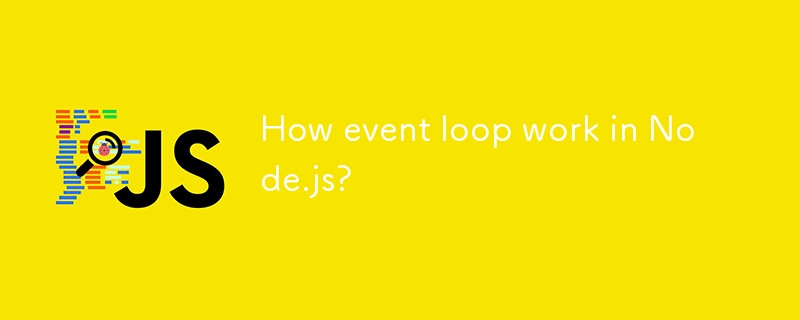

The event loop is a core concept in Node.js that enables it to handle asynchronous operations efficiently. Here's a simplified explanation of how it works:
Node.js operates on a single thread. This means it can only execute one piece of code at a time. However, Node.js is designed to handle many operations concurrently without requiring multiple threads.
Node.js uses non-blocking I/O operations. When Node.js performs tasks like reading files, querying a database, or making network requests, it doesn't wait for these tasks to complete before moving on to the next task. Instead, it continues executing other code while these tasks are being processed.
The event loop is responsible for managing the execution of code and handling asynchronous events. It continuously checks the "queue" of tasks and decides which ones to execute. Here's a step-by-step breakdown:
Asynchronous tasks, once completed, push their callbacks to a queue. The event loop picks these callbacks from the queue and executes them in order.
Apart from the main queue, there's also a microtask queue (or next tick queue) where callbacks scheduled with process.nextTick() or promises' .then() handlers are queued. Microtasks have priority over regular callbacks, meaning they are executed after the current operation completes but before the event loop moves on to the next phase.
Here's a simple example to illustrate how the event loop works:
const fs = require('fs');
console.log('Start');
fs.readFile('file.txt', (err, data) => {
if (err) throw err;
console.log('File read complete');
});
console.log('End');
Output:
Start End File read complete
Explanation:
The event loop allows Node.js to efficiently handle many operations at once, despite being single-threaded, by delegating operations to the system and handling their results asynchronously.
The Event Loop orchestrates the execution of tasks, prioritizing the Microtask Queue to ensure promises and related operations are resolved quickly before moving on to tasks in the Main Task Queue (Macro Task).
This dynamic enables JavaScript to handle complex asynchronous behavior in a single-threaded environment.
The above is the detailed content of How event loop work in Node.js?. For more information, please follow other related articles on the PHP Chinese website!
 php development tools
php development tools
 How to open php in a web page
How to open php in a web page
 What is the difference between TCP protocol and UDP protocol?
What is the difference between TCP protocol and UDP protocol?
 What is mobile HD
What is mobile HD
 What is the reason why the computer screen is black but the computer is on?
What is the reason why the computer screen is black but the computer is on?
 Solution to reboot and select proper boot device
Solution to reboot and select proper boot device
 What are the levels of mobile user star ratings?
What are the levels of mobile user star ratings?
 win10 connect to shared printer
win10 connect to shared printer




